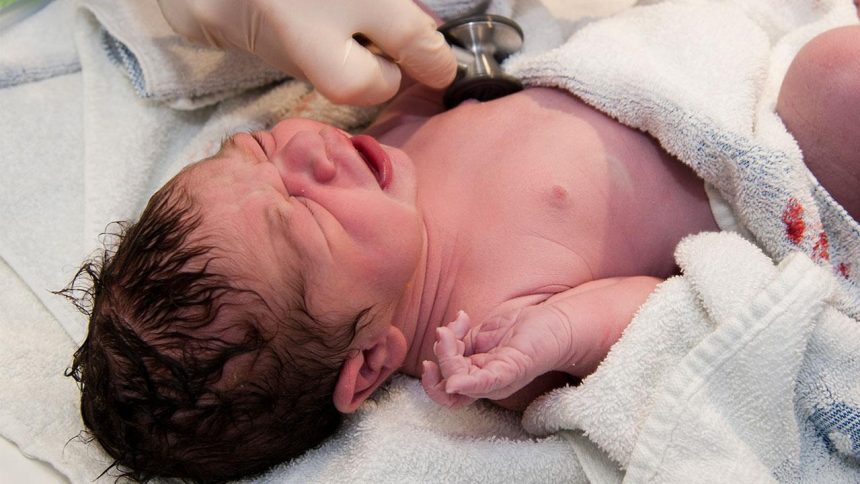New parents often find themselves navigating the delicate balance between nurturing their newborn’s needs and fostering the skills necessary for independent sleep. A common challenge arises when infants display a strong preference for being held during sleep, leading to reliance on parental contact for rest. This behavior, while natural and developmentally normal, can become a source of anxiety for caregivers concerned about establishing healthy sleep habits. An understanding of the underlying reasons for this dependence, combined with evidence-based strategies, can empower parents to encourage independent sleep in their infants. This article explores the physiological and psychological factors contributing to newborn sleep patterns, while providing practical guidance on fostering self-soothing skills and promoting an environment conducive to independent sleep. Through a comprehensive examination of current research and expert insights, we aim to equip parents with the tools needed to support their child’s transition to self-sufficient sleeping, ultimately enhancing the well-being of both infant and caregiver.
Understanding the Reasons Behind Newborn Sleep Dependency
The phenomenon of sleep dependency in newborns is closely linked to a combination of biological and environmental factors. **Neonatal sleep patterns** typically reflect the infant’s need for proximity to caregivers, which is deeply rooted in evolutionary practices. Newborns possess limited ability to self-soothe and rely heavily on external stimuli for comfort. When held, they experience the rhythmic sounds of their caregiver’s heartbeat and the warmth of their body, creating a sense of security. Consequently, this dependency is not simply a behavioral choice but rather a survival mechanism that ensures the infant remains safe and nurtured during their most vulnerable stages of development.
Moreover, **parenting practices** and family dynamics play a significant role in shaping an infant’s sleep habits. Parents often respond to their baby’s needs by providing immediate comfort, inadvertently reinforcing the dependency on external presence for sleep. Key factors contributing to this environment include:
- **Co-sleeping arrangements** that promote close physical contact.
- **Inconsistent sleep routines** that may confuse the baby’s understanding of independent sleep.
- **Emotional responses** from the caregiver, including anxiety about letting the baby cry alone.
Understanding these elements is crucial for parents looking to foster independent sleep habits while maintaining a secure attachment with their little ones. By gradually shifting the focus from external comfort to self-soothing techniques, parents can help their newborns develop healthier sleep patterns.
Developmental Milestones and Their Influence on Sleep Patterns
Understanding the interplay between developmental milestones and sleep patterns is crucial for parents navigating the early stages of their newborn’s life. As infants grow, they go through various stages of development, each accompanied by unique changes in their sleep behaviors. For instance, during the first few months, babies often experience irregular sleep cycles and frequent awakenings, making it common for them to rely on being held to fall asleep. The reasons for this reliance can be attributed to their need for physical comfort and security, which is essential for emotional and neurological growth. Key developmental milestones such as motor skills, sensory processing, and attachment formation directly influence how infants experience and regulate sleep. These milestones often dictate when a baby might be ready to start sleeping independently.
To encourage independent sleep, caregivers can adopt several strategies that align with these developmental stages. Establishing a **consistent bedtime routine** can help signal to the baby that it is time to sleep, creating a sense of predictability. Furthermore, parents can gradually introduce **short periods of separation** during the day to help infants learn to self-soothe. Consider the following tips:
- Create a calming environment: Dim lights and reduce noise levels.
- Practice gentle transitions: Shift from holding to laying the baby down drowsy but awake.
- Introduce a comfort object: A soft blanket or stuffed toy can provide security.
Implementing these approaches can foster a smoother transition to independent sleep as infants develop their ability to self-regulate and adapt to new sleep patterns.
Strategies for Gradually Promoting Independent Sleep in Newborns
To foster independent sleep in newborns, a methodical approach is essential. Begin by establishing a consistent bedtime routine, which signals to your baby that it’s time to wind down. This routine might include activities such as:
- Bath Time: A warm bath can be soothing and help to relax your baby.
- Gentle Rocking: Providing a little motion can ease them into sleepiness without fully relying on being held.
- Soft Lullabies: Playing calming music can create a tranquil environment conducive to sleep.
As part of this strategy, parents should gradually transition their baby from being held to sleeping in their crib. Start by allowing your newborn to fall asleep in your arms, then gently place them in the crib while still drowsy but awake. This helps them learn to fall asleep in their own space. Additionally, aim to create an optimal sleep environment by:
- Maintaining a Dark Room: Use blackout curtains to help signal that it’s night-time.
- Controlling Noise Levels: Consider using white noise machines to provide a consistent sound that can soothe your baby.
- Regulating Room Temperature: Keep the nursery comfortably cool, ideally between 68°F and 72°F.
Creating a Supportive Sleep Environment to Foster Autonomy
Creating an environment that promotes autonomy in sleep for your newborn is crucial for their development and your peace of mind. Begin by ensuring that the sleep space is serene, with soft lighting and minimal noise. Consider the following elements to foster a comforting atmosphere:
- Temperature: Maintain a comfortable room temperature, ideally between 68°F to 72°F (20°C to 22°C).
- Sound: Utilize white noise machines to create a soothing backdrop that can help mask disruptive sounds.
- Soft Textures: Choose a crib with a firm mattress and breathable bedding to support safe sleep practices.
Additionally, the use of familiar scents can also promote a sense of security. Introducing a soft blanket or a piece of clothing that carries your scent may help your baby feel more at ease. Establishing a consistent sleep routine is equally important; consider incorporating rituals that signal bedtime. A sample routine may include:
| Activity | Duration |
|---|---|
| Feeding | 15-20 minutes |
| Bathing | 10 minutes |
| Storytime | 5-10 minutes |
| Soothing and Lullaby | 5 minutes |
Q&A
Q&A: Newborn Only Sleeps When Held: How to Encourage Independent Sleep
Q1: What are common reasons why a newborn may only sleep when held?
A1: Newborns often seek comfort and security, which is primarily provided by their caregivers. This preference for being held can be attributed to several factors, including their strong instinctual drive for proximity to their caregivers for safety and nourishment. Additionally, the soothing effects of skin-to-skin contact, the rhythmic sound of a caregiver’s heartbeat, and the warmth from being held can contribute to a newborn’s sense of security, making them more likely to sleep when in close contact.
Q2: What are the potential drawbacks of a newborn only sleeping when held?
A2: While holding a newborn can promote bonding and provide immediate comfort, reliance on being held for sleep may hinder the development of independent sleep patterns. This can lead to challenges for parents who may find it difficult to manage other responsibilities, resulting in sleep deprivation. Furthermore, if a parent becomes accustomed to always holding the baby to sleep, it may complicate future sleep training and establish patterns that are difficult to change as the child grows.
Q3: What strategies can be employed to encourage a newborn to sleep independently?
A3: Several strategies can aid in fostering independent sleep for newborns. Gradual transitioning is often effective; allowing the baby to fall asleep in a parent’s arms and then gently placing them in a safe sleep space can help create a new association with sleep. Establishing a consistent bedtime routine is paramount, as it signals to the infant that it is time to sleep. Additionally, creating a conducive sleep environment—dim lights, white noise, and a comfortable temperature—can encourage independent sleep as the baby becomes accustomed to their surroundings.
Q4: How important is responding to a newborn’s cries when attempting to encourage independent sleep?
A4: Responding to a newborn’s cries is crucial, as it helps build a sense of trust and security. Research indicates that responsive parenting fosters emotional regulation and attachment. When attempting to encourage independent sleep, it is essential to strike a balance; addressing a baby’s needs while allowing them to self-soothe can promote independence. Parents are encouraged to gradually increase the time before responding to their baby’s cries, allowing the infant to develop the ability to settle themselves without immediate intervention.
Q5: At what age can parents begin to encourage independent sleep habits in their newborn?
A5: While every child is unique, many pediatric experts suggest that parents can start encouraging independent sleep habits around four to six months of age. At this stage, infants typically show increased maturity in their sleep patterns and physiological development, making them more capable of self-soothing. However, parents should assess their child’s readiness on an individual basis, as factors such as temperament and any underlying health concerns may influence their ability to sleep independently.
Q6: Are there any risks associated with hastily encouraging independent sleep?
A6: Indeed, rushing the process of encouraging independent sleep can lead to undue stress for both the infant and the caregiver. It may result in increased crying, which can heighten anxiety in parents and undermine the nurturing bond essential for healthy attachment development. It is advisable to take a gradual, responsive approach to avoid potential emotional distress for the baby. Consulting a pediatrician or child sleep expert is often beneficial to tailor strategies that suit the individual family’s needs while prioritizing the infant’s emotional well-being.
Q7: What resources are available for parents seeking guidance on this topic?
A7: Parents can find a wealth of resources on infant sleep through pediatricians, family therapists, and child development specialists. Numerous books and online platforms dedicated to sleep training can provide evidence-based techniques tailored to various parenting styles. Additionally, parenting forums and support groups can offer a sense of community and shared experiences, helping parents feel less isolated in their challenges with promoting independent sleep for their newborns.
Key Takeaways
understanding the dynamics of newborn sleep patterns is crucial for both caregivers and health professionals. While it is natural for infants to seek comfort in being held, fostering independent sleep is an attainable goal that can offer numerous benefits for both the baby and the parents. By implementing strategies such as establishing consistent sleep routines, creating a conducive sleep environment, and gradually encouraging self-soothing techniques, caregivers can help their newborns transition towards independent sleep. It is essential to approach this process with patience and empathy, recognizing that each child is unique and may respond differently to various methods.
Furthermore, as research continues to evolve in the fields of pediatric sleep and developmental psychology, ongoing education and support for parents are vital. By equipping caregivers with knowledge and resources, we can promote healthier sleep habits that enhance the well-being of families and infants alike. Embracing this journey towards independent sleep not only contributes to the physical and emotional health of newborns but also fosters a more balanced and restful environment for the entire household.


